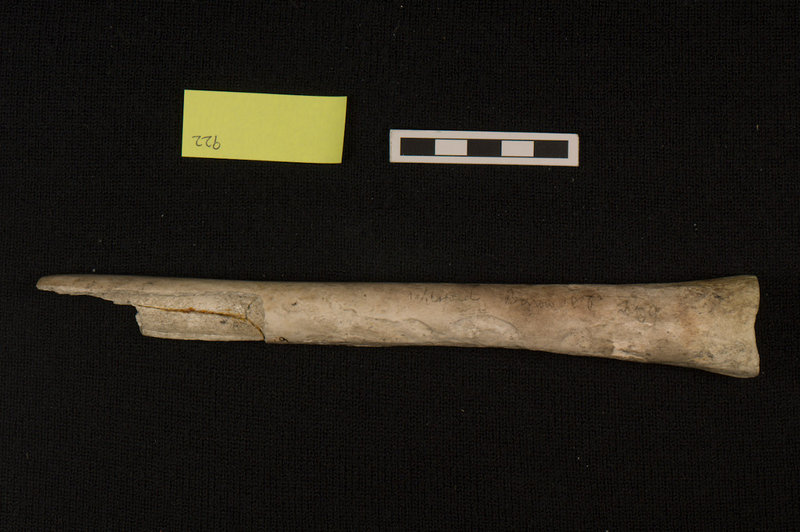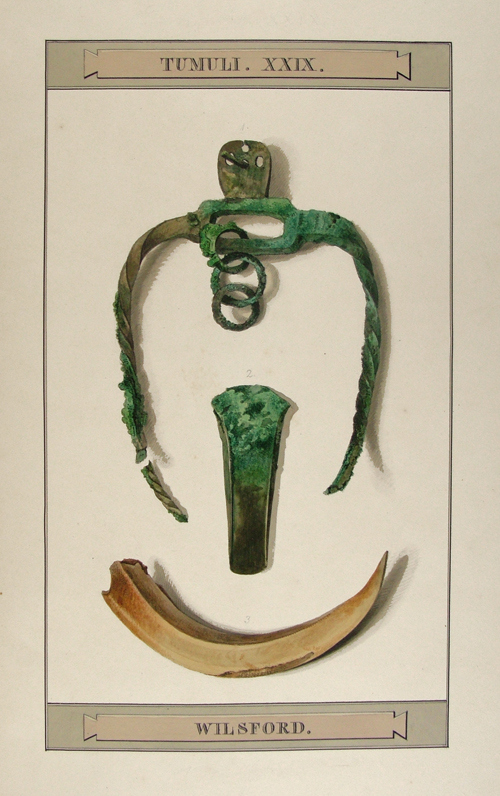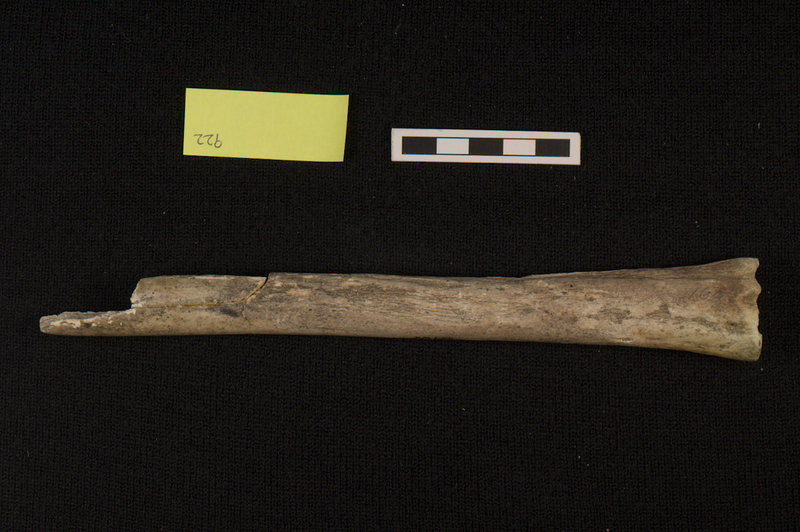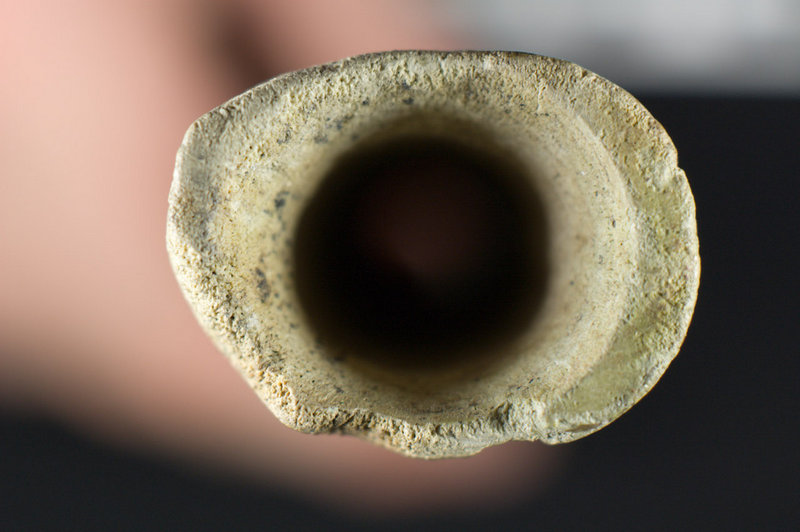When asked about the first use of a trowel by an archaeologist, we had to tell the fascinating story of the excavation of Bush Barrow, close to Stonehenge. In 1808 William Cunnington led the excavation of this impressive burial mound, one of 50 on Normanton Down, looking out over Stonehenge. The excavation was undertaken by his two trusted workers, Stephen and John Parker, who were father and son, and their finds were illustrated by Philip Crocker. William Cunnington takes up the story in his notes:
The handle of wood belonging to the dagger had been richly and most singularly ornamented by an immense quantity of minute gold rivets no thicker than the smallest pin –the end of the handle had been filled with these small points of gold, but in the flat part of the handle these rivets had been most elegantly arranged in a Vandyke pattern so as to procure a novel and most pleasing effect. Mr. Crocker has drawn part of the end of the handle which may give you a better idea of the whole. There are now a number of these minute gold rivets in the remainder of the wood which still adheres to the brass. When we first discovered these shining points of gold we had no concept of their nature, otherwise we might perhaps have preserved thousands of them, but unfortunately John with his trowel had scattered them in every direction before I had examined them with a glass.
The dagger, along with the other finds from Bush Barrow, are on display, including the studs - roughly the same diameter as a human hair and less than 1mm long. It is estimated that the complex design would have used 140,000 gold studs, each crafted individually from square-sectioned gold wire.






